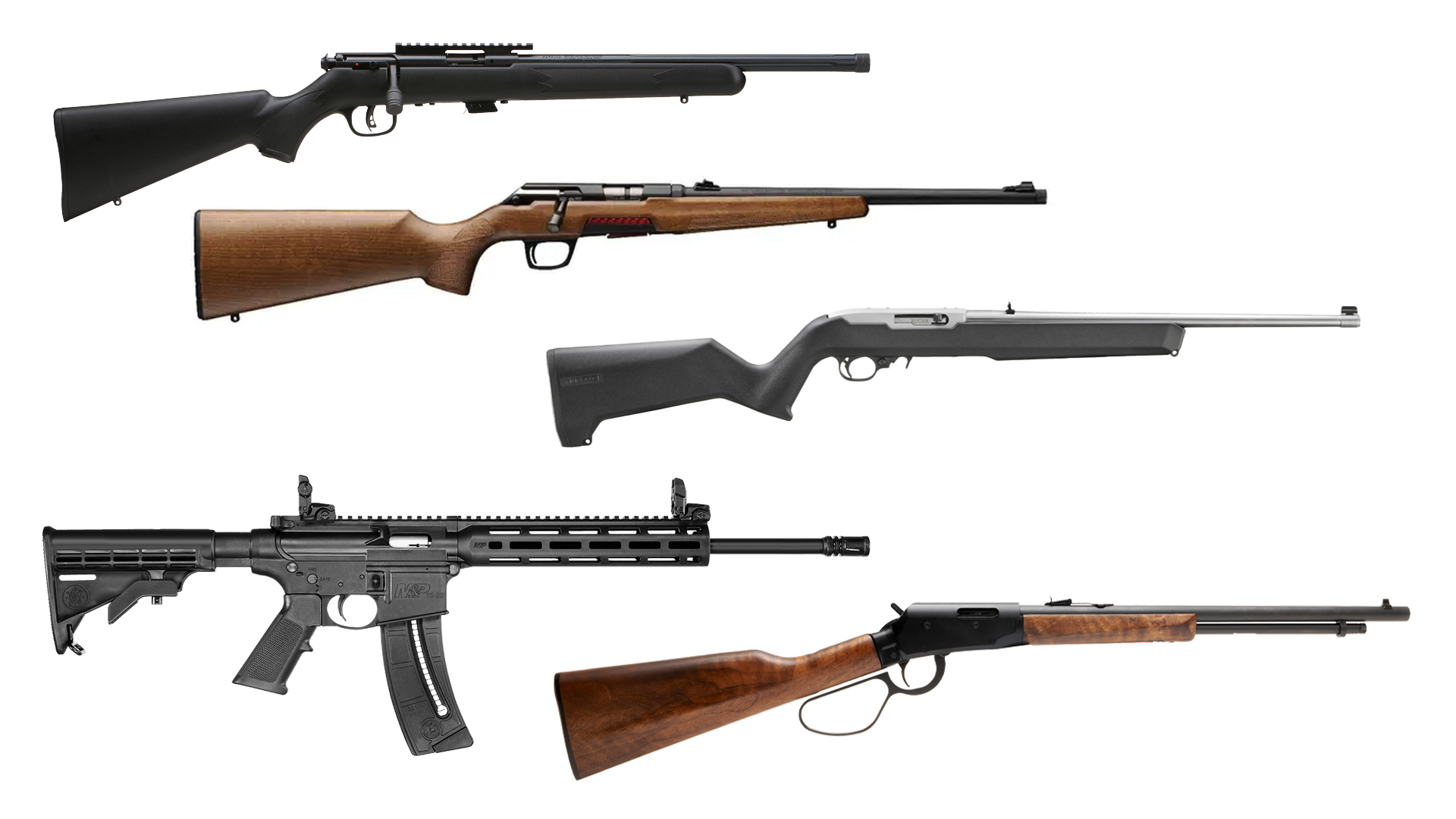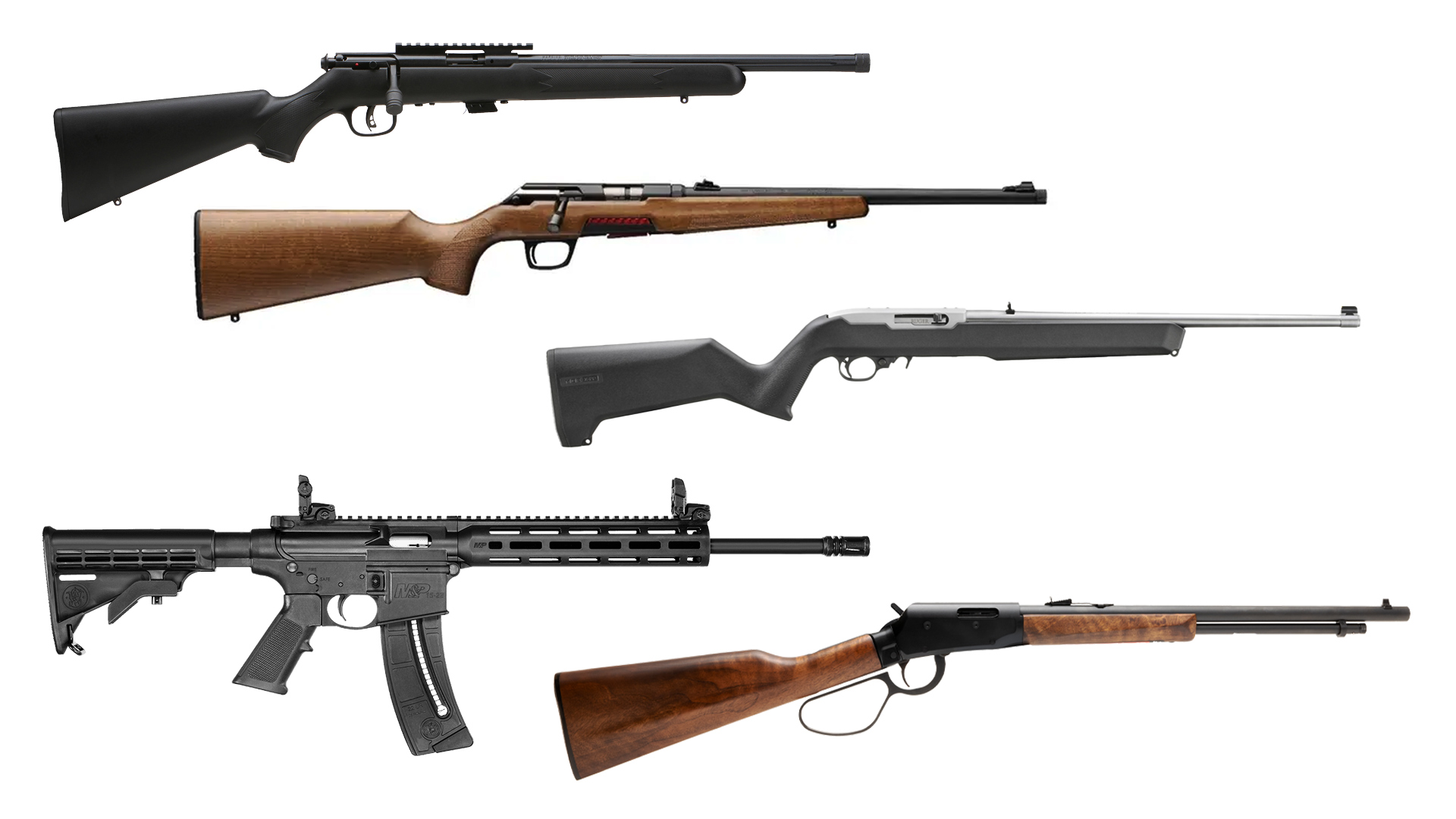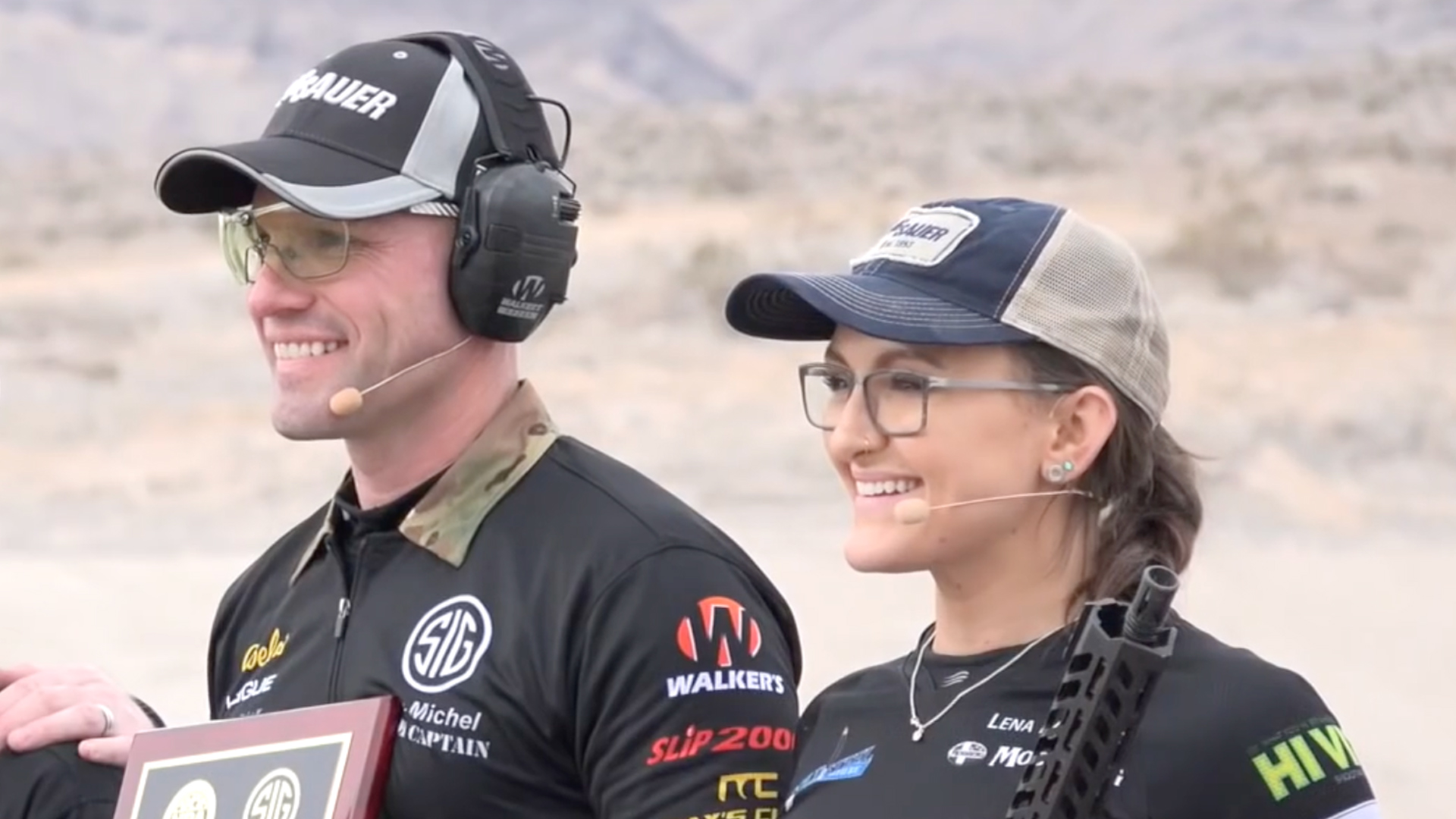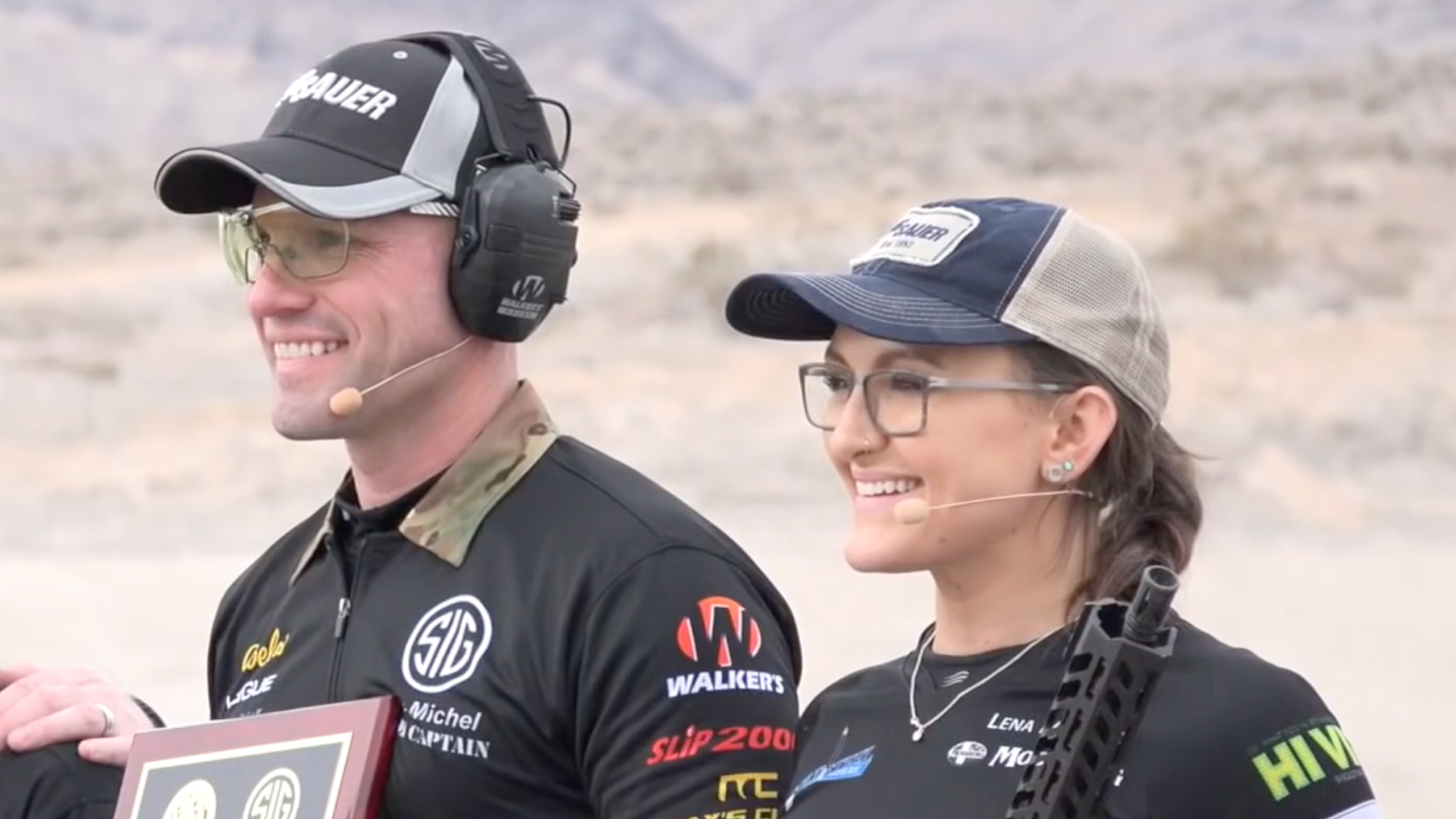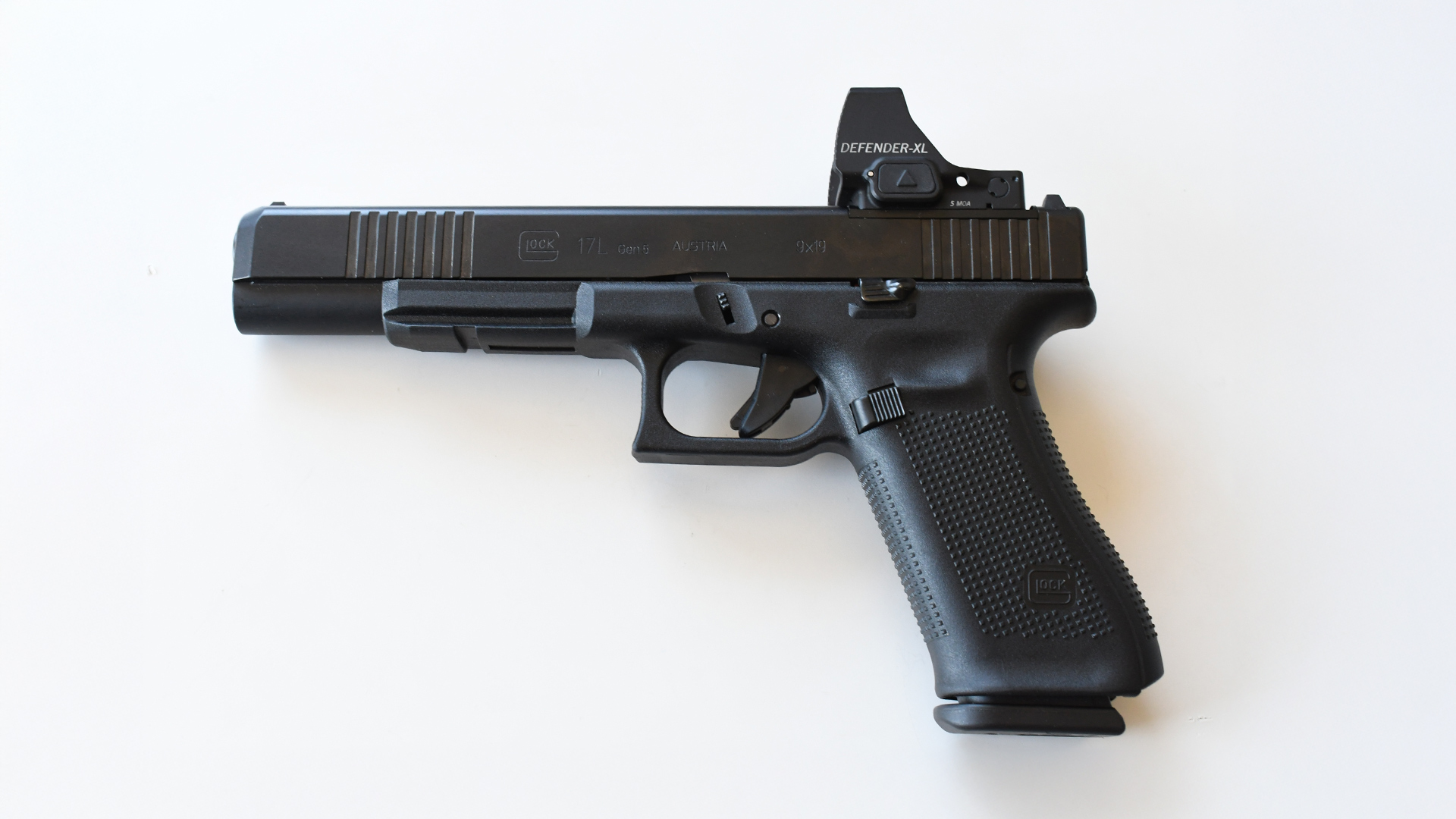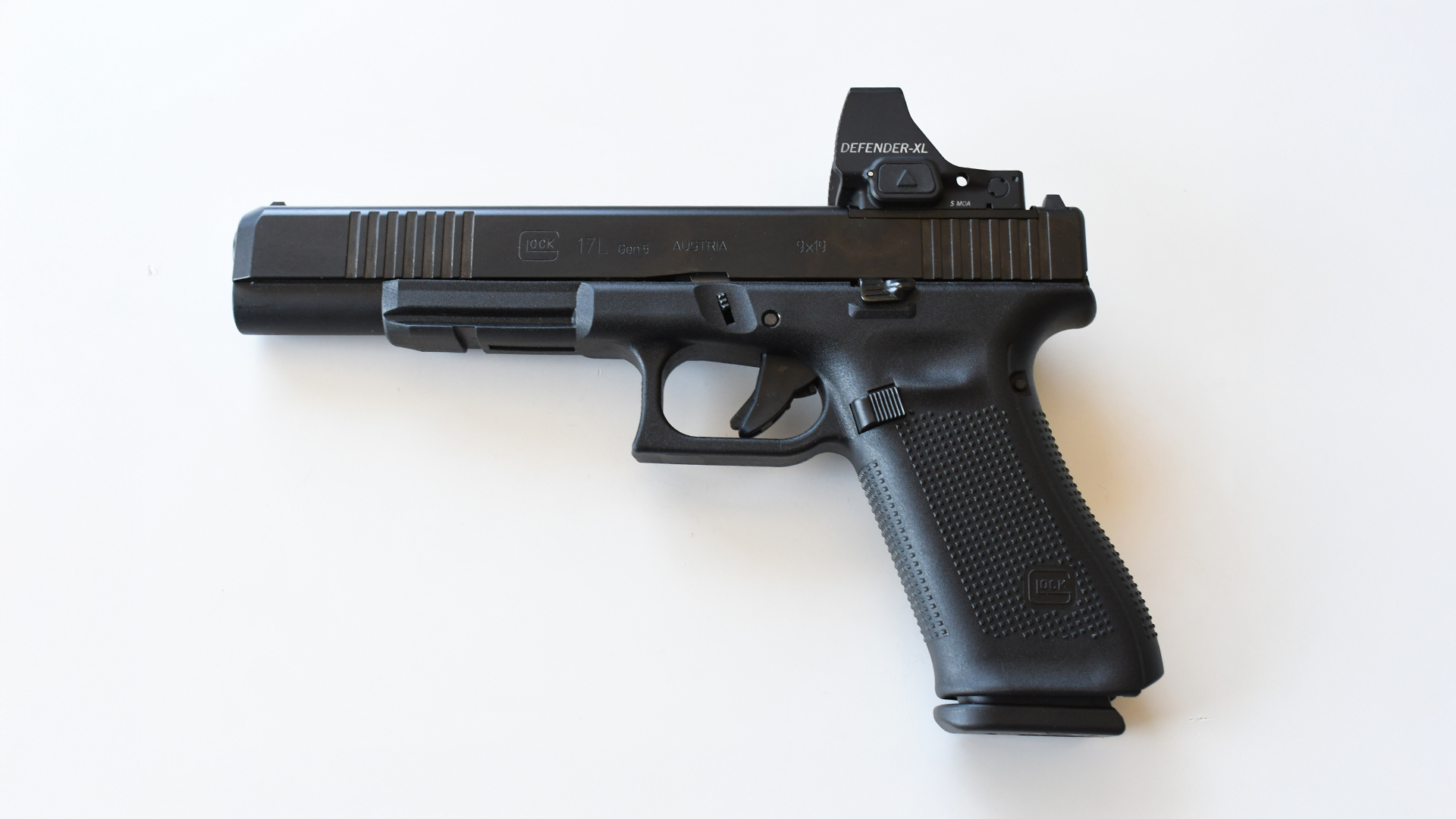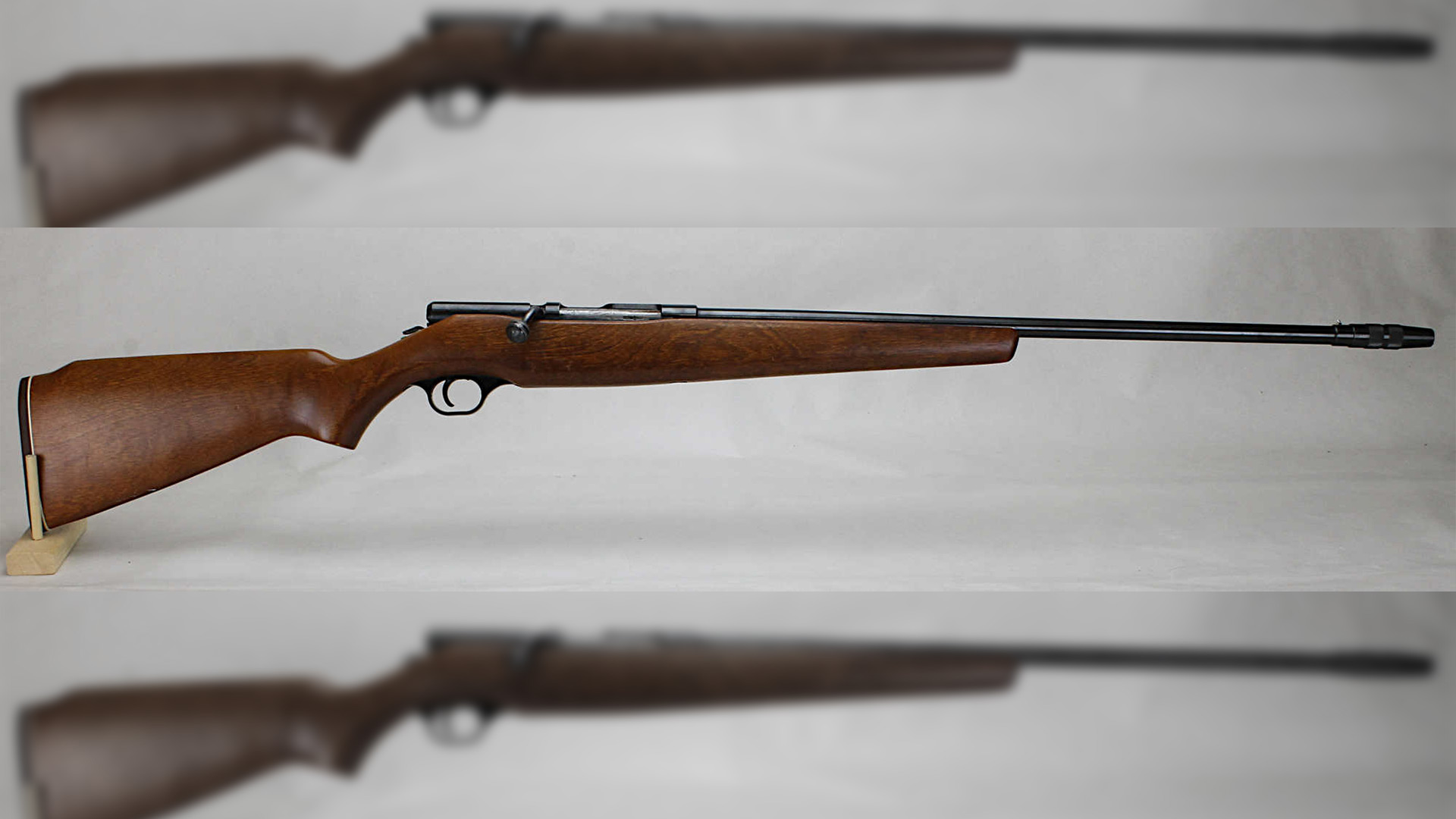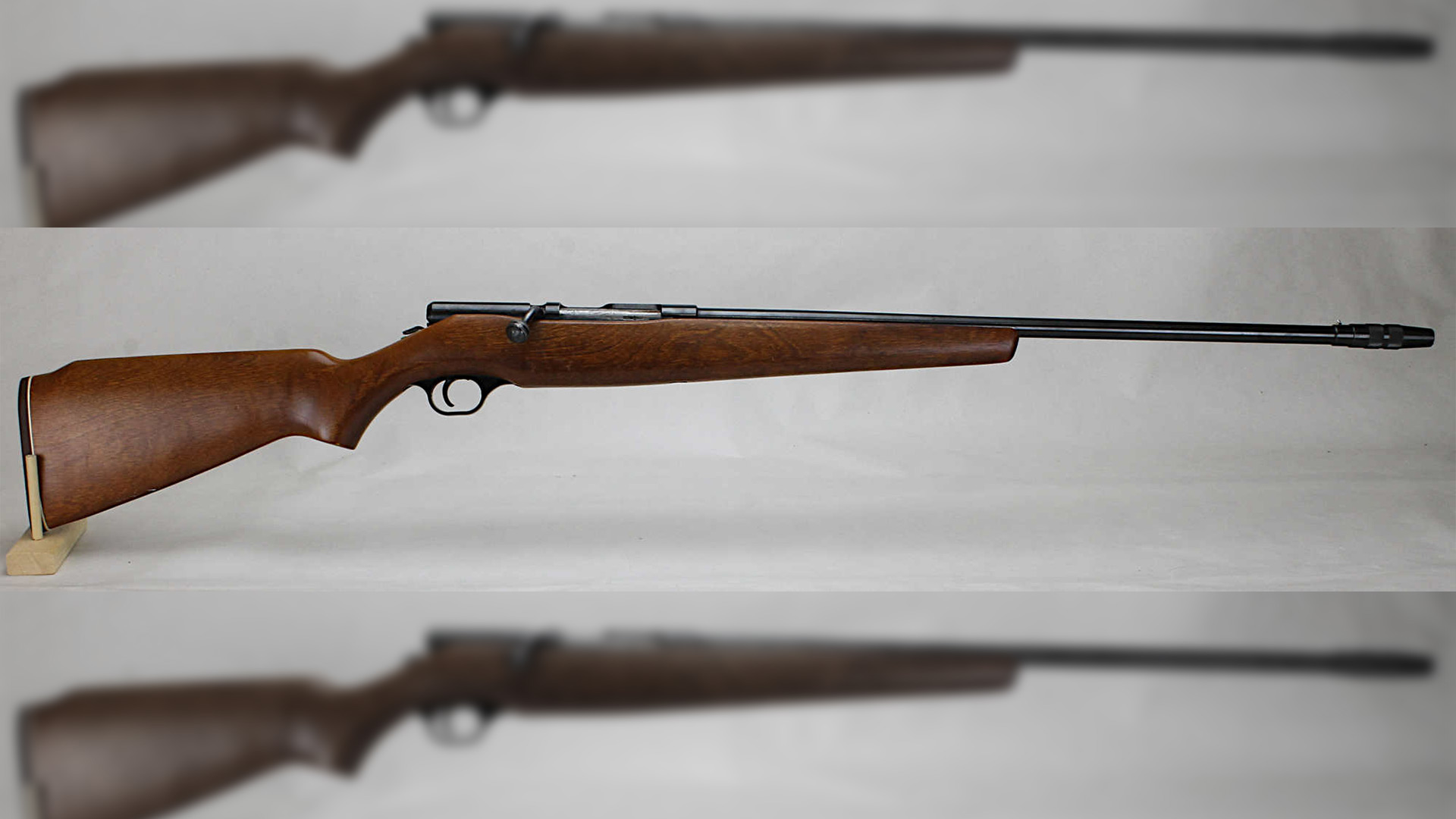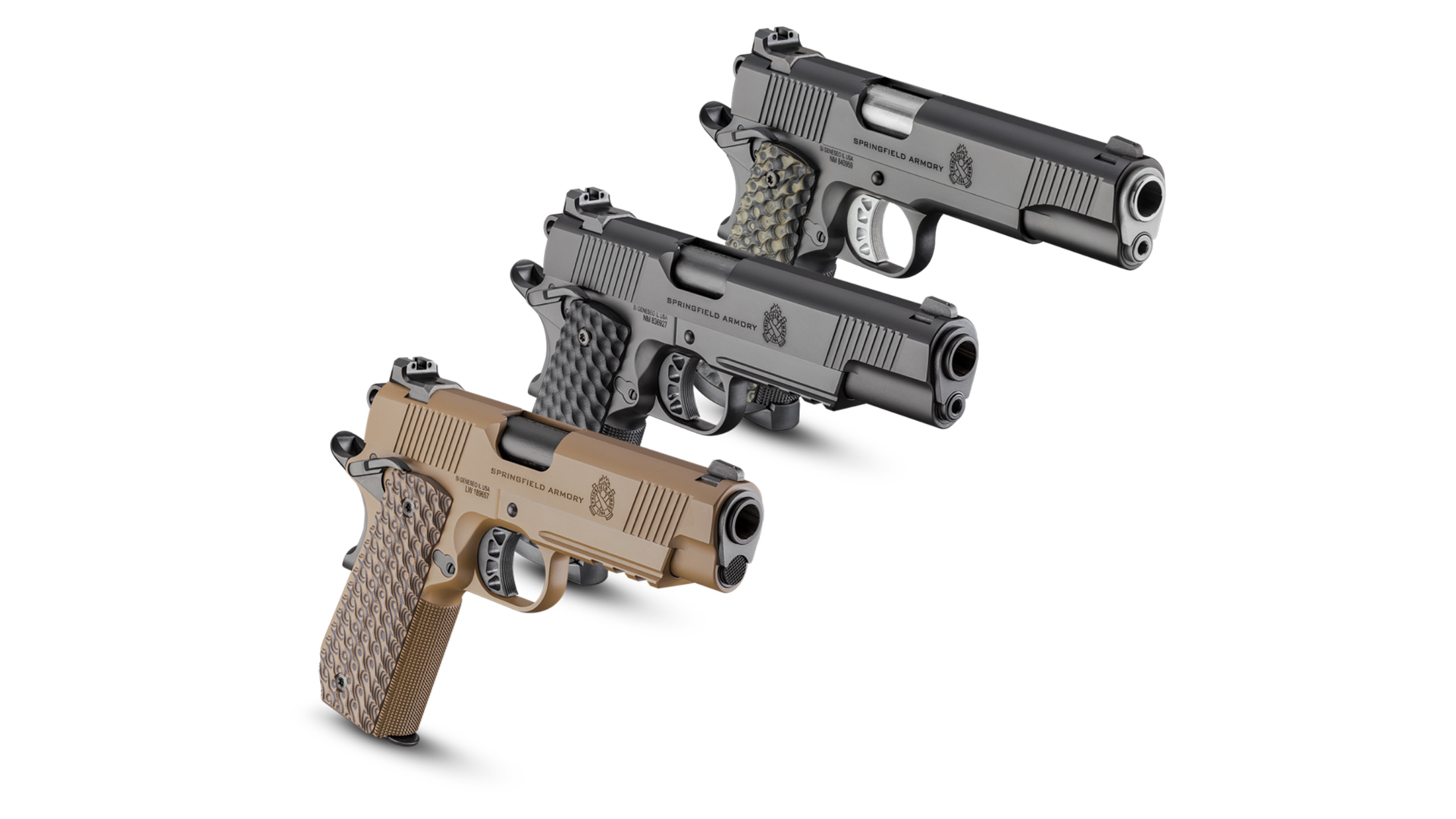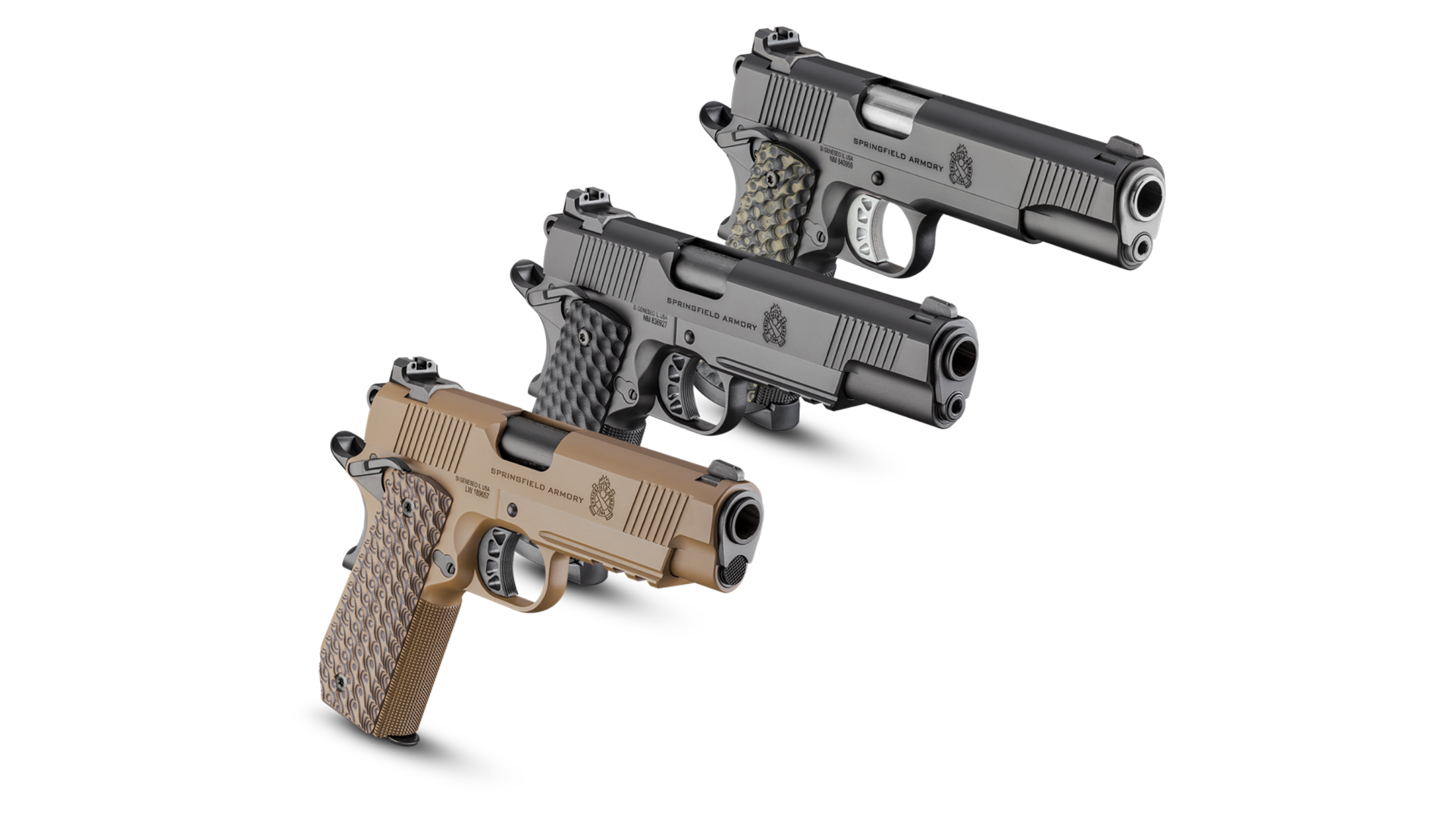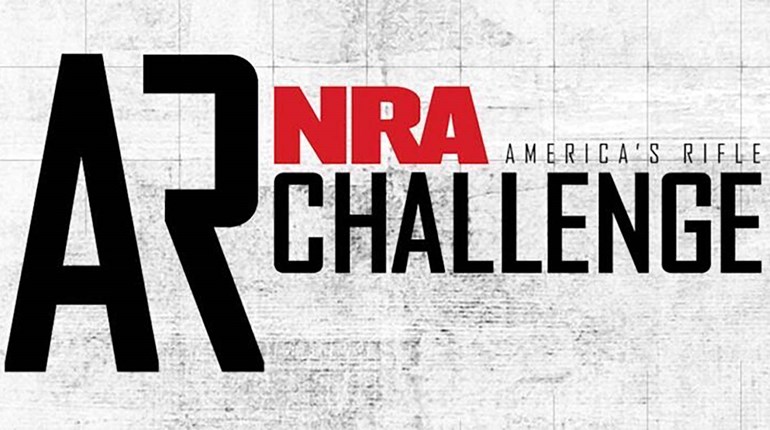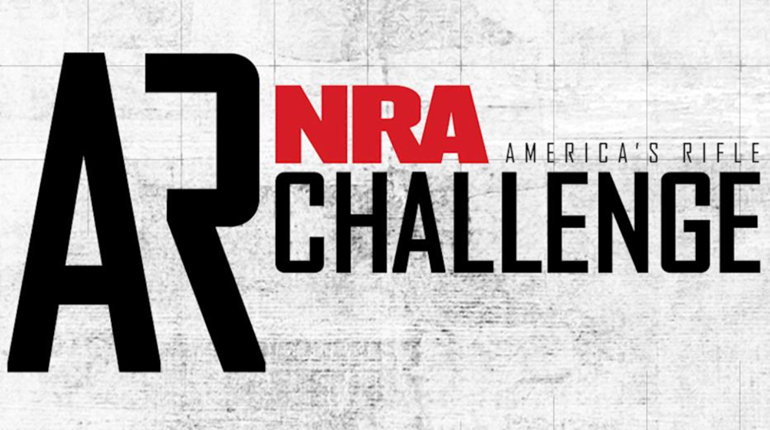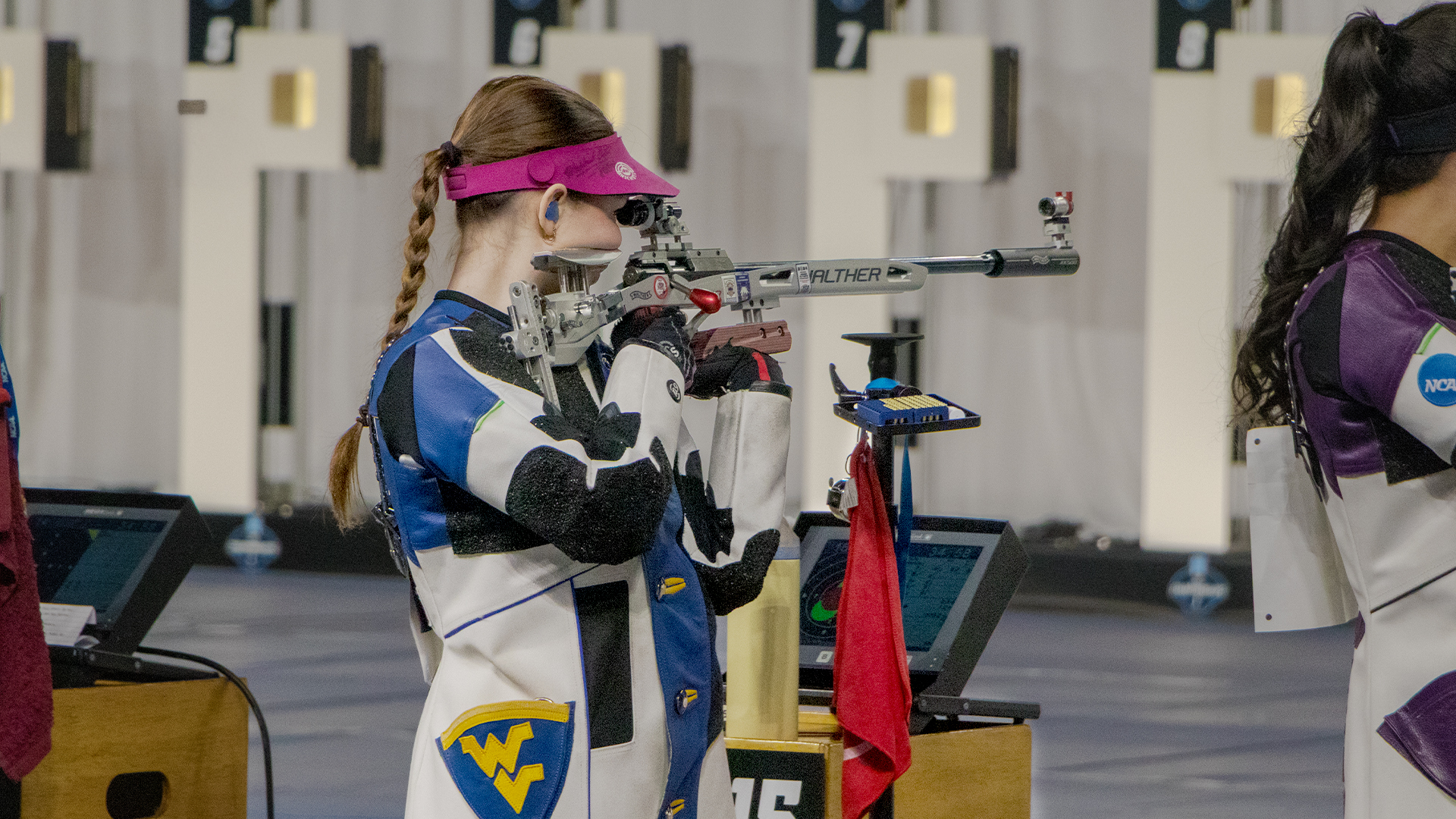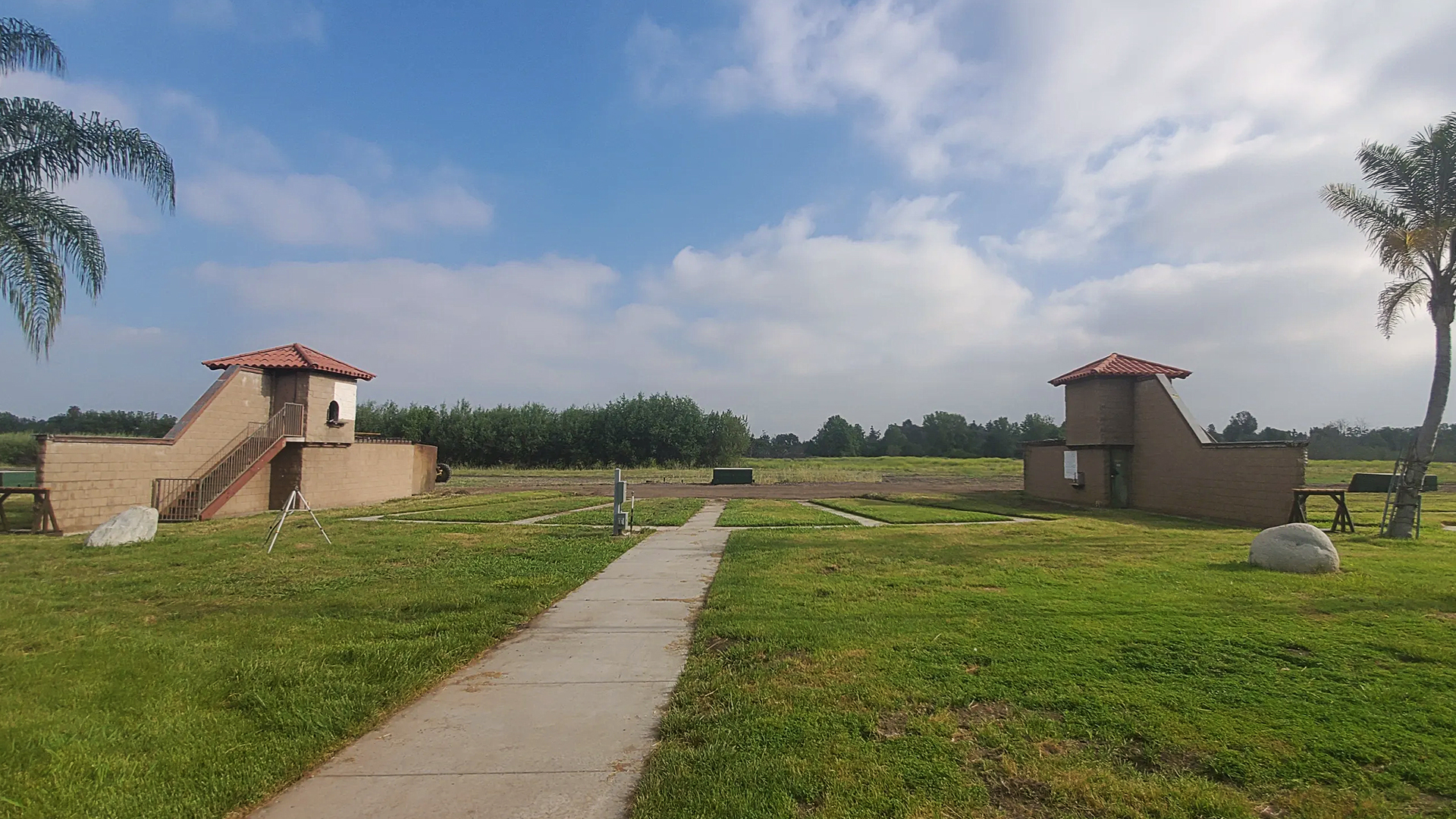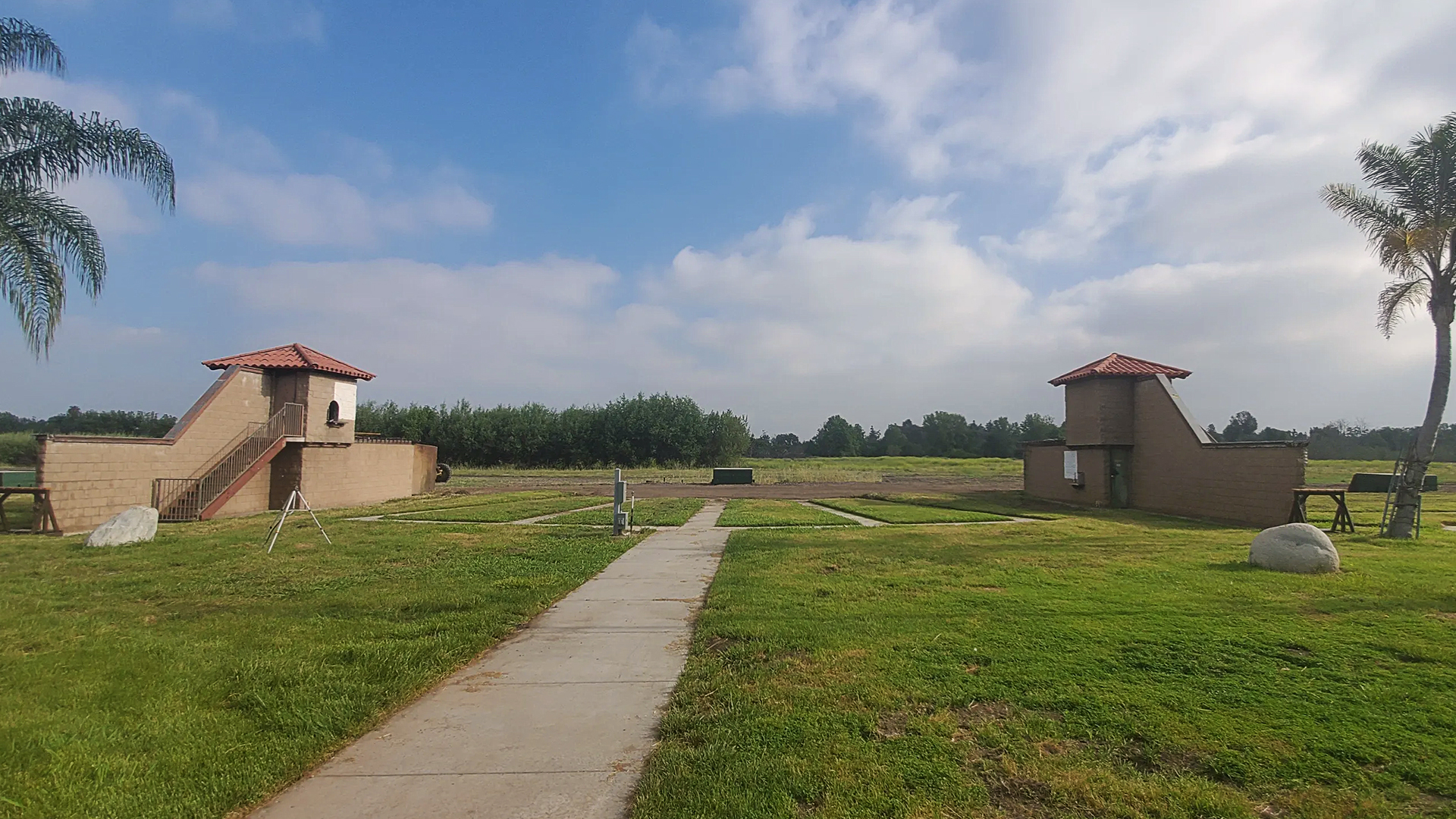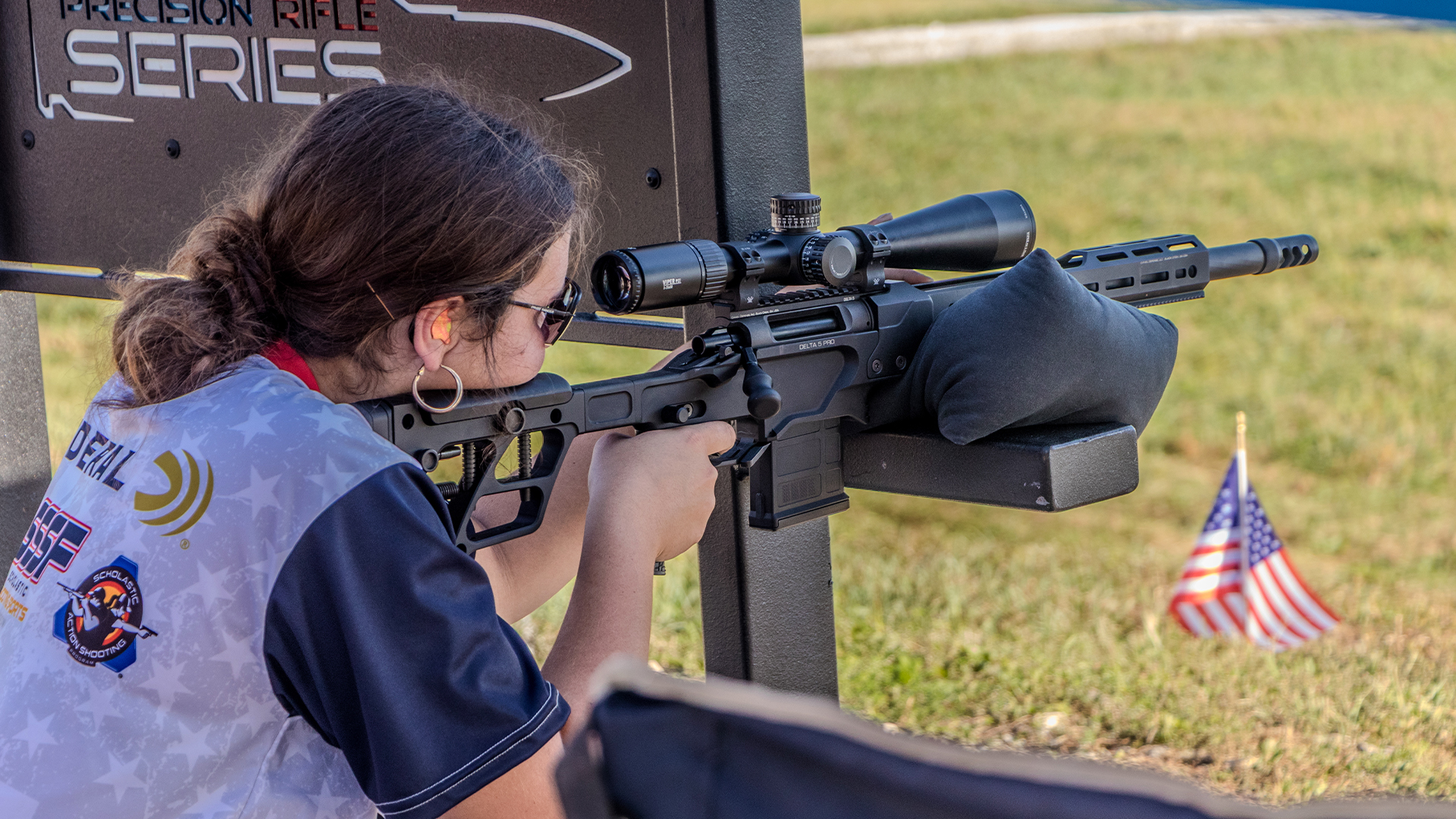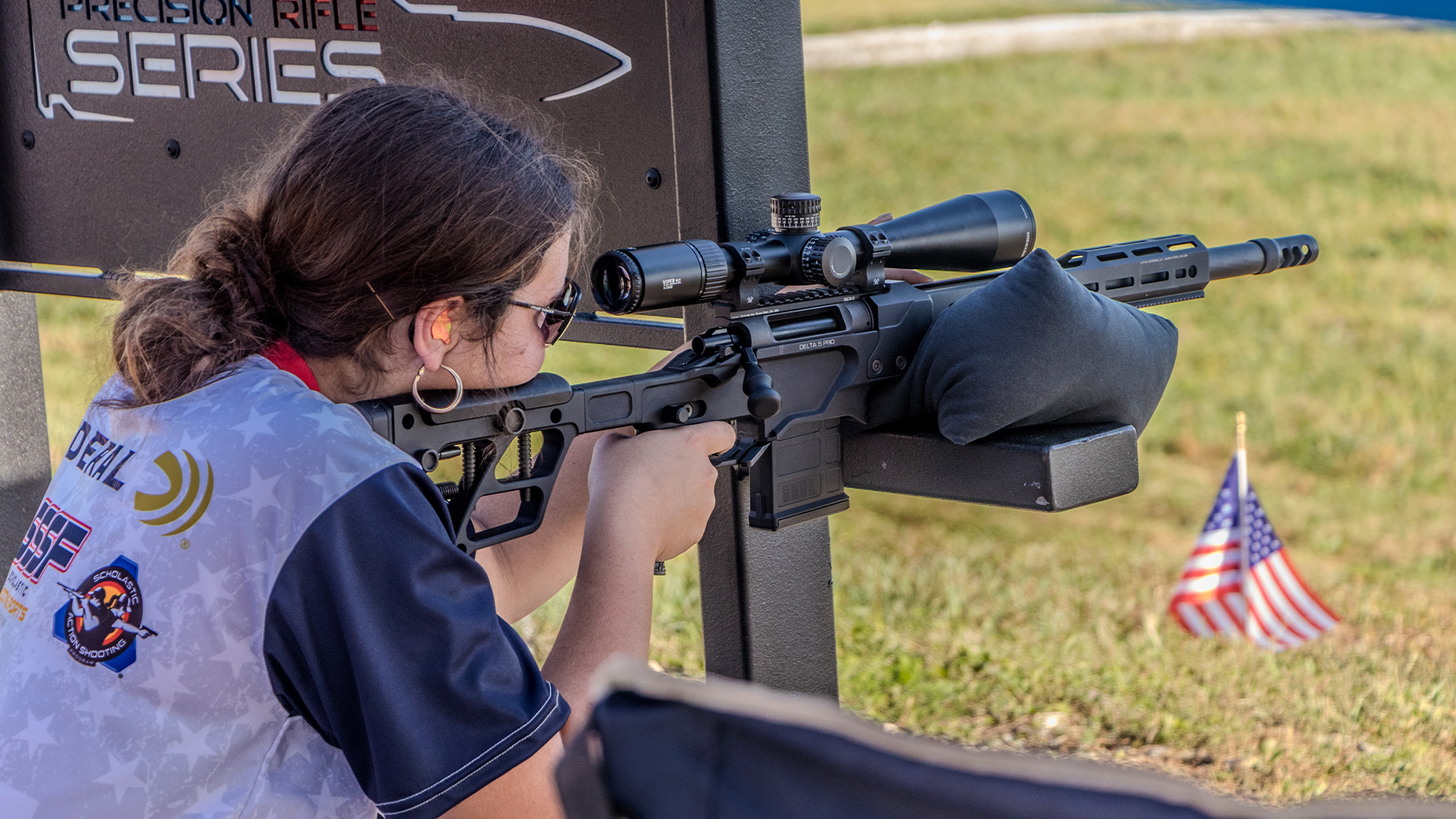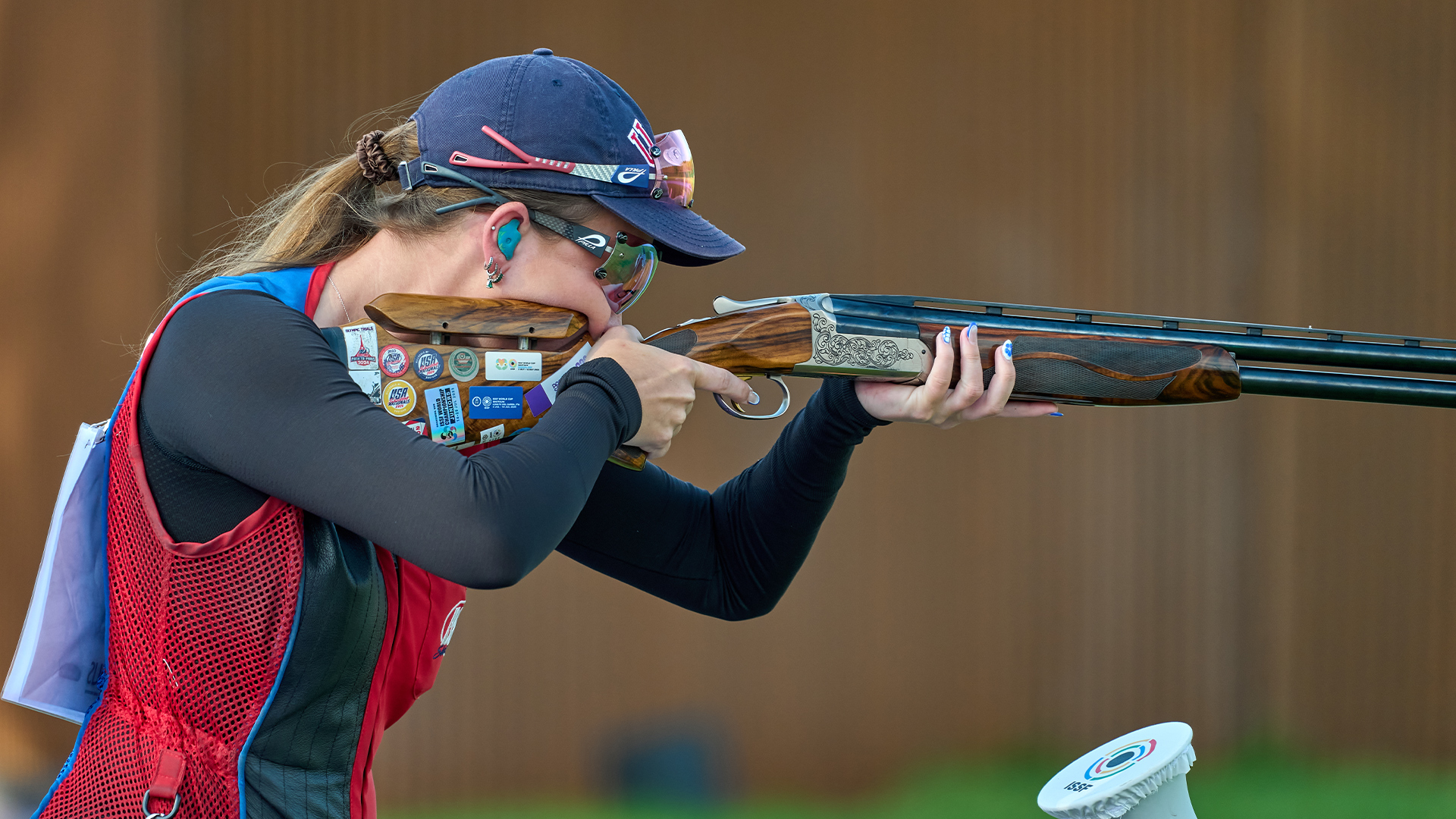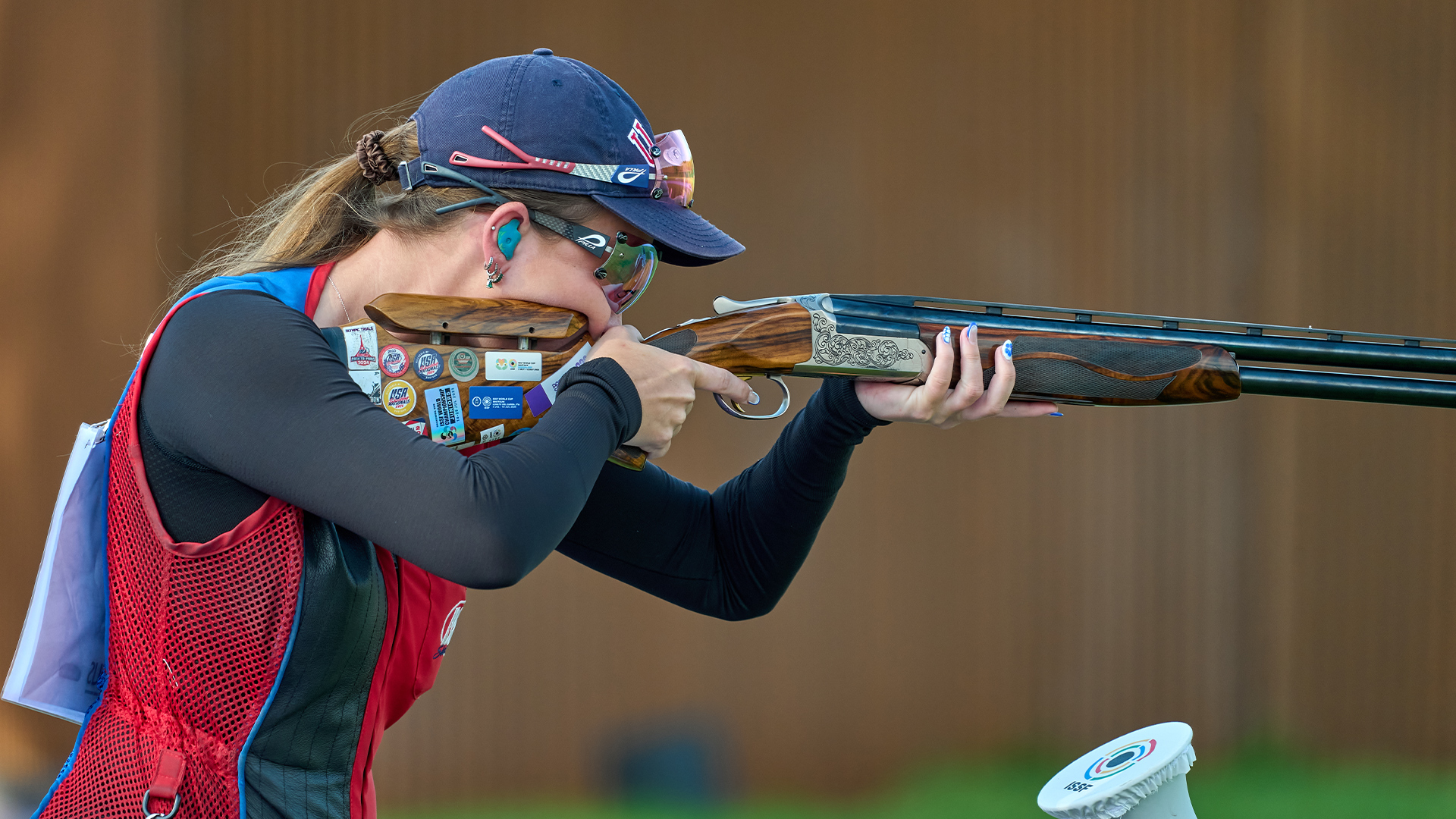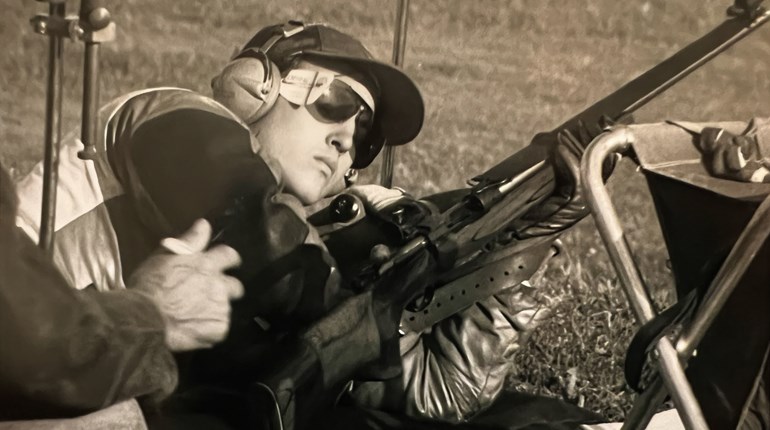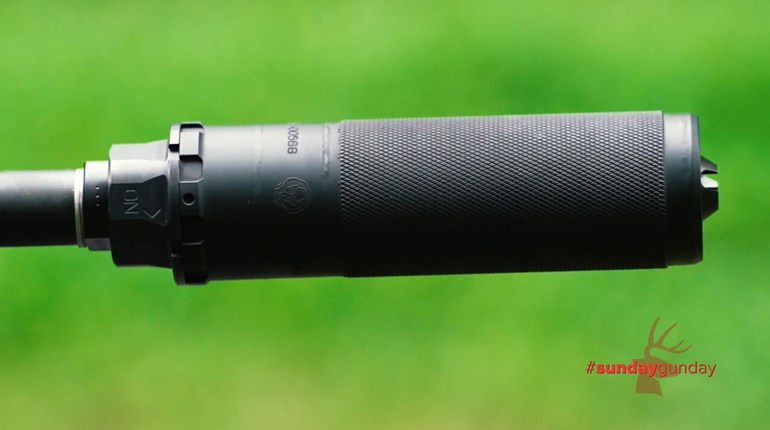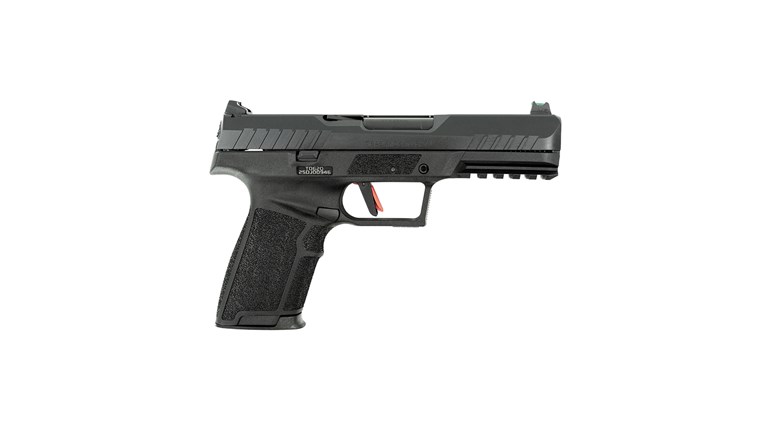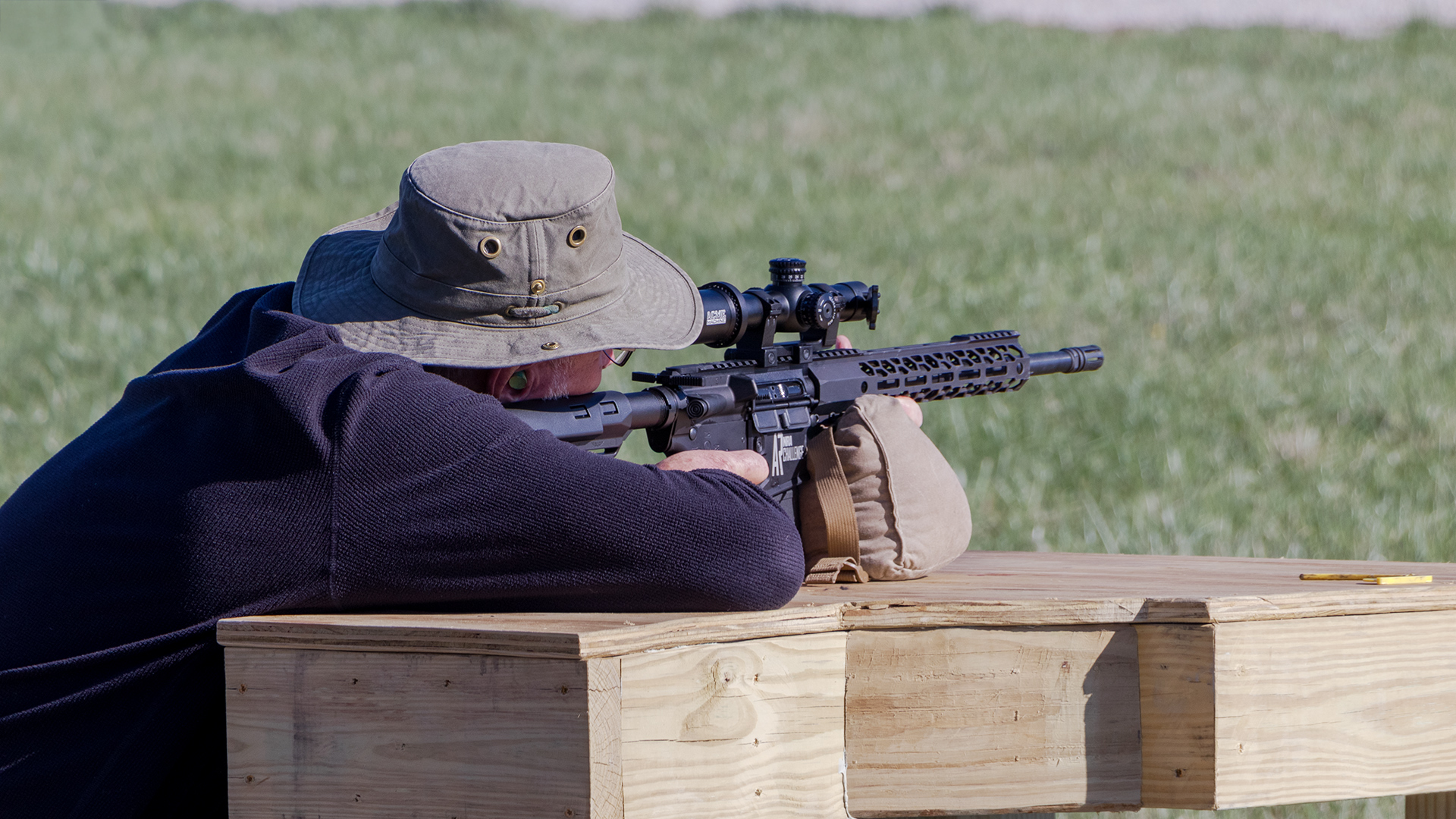
Millions of Americans have one or more AR-platform rifles in their gun safes. But how many of them use them for anything besides plinking? The National Rifle Association is aiming to change that with NRA America’s Rifle Challenge, a new competitive shooting program designed to encourage responsible AR rifle owners to do more than just target practice at the range. NRA America’s Rifle Challenge provides competitors a fun and safe introduction to the action shooting sports with their ARs.
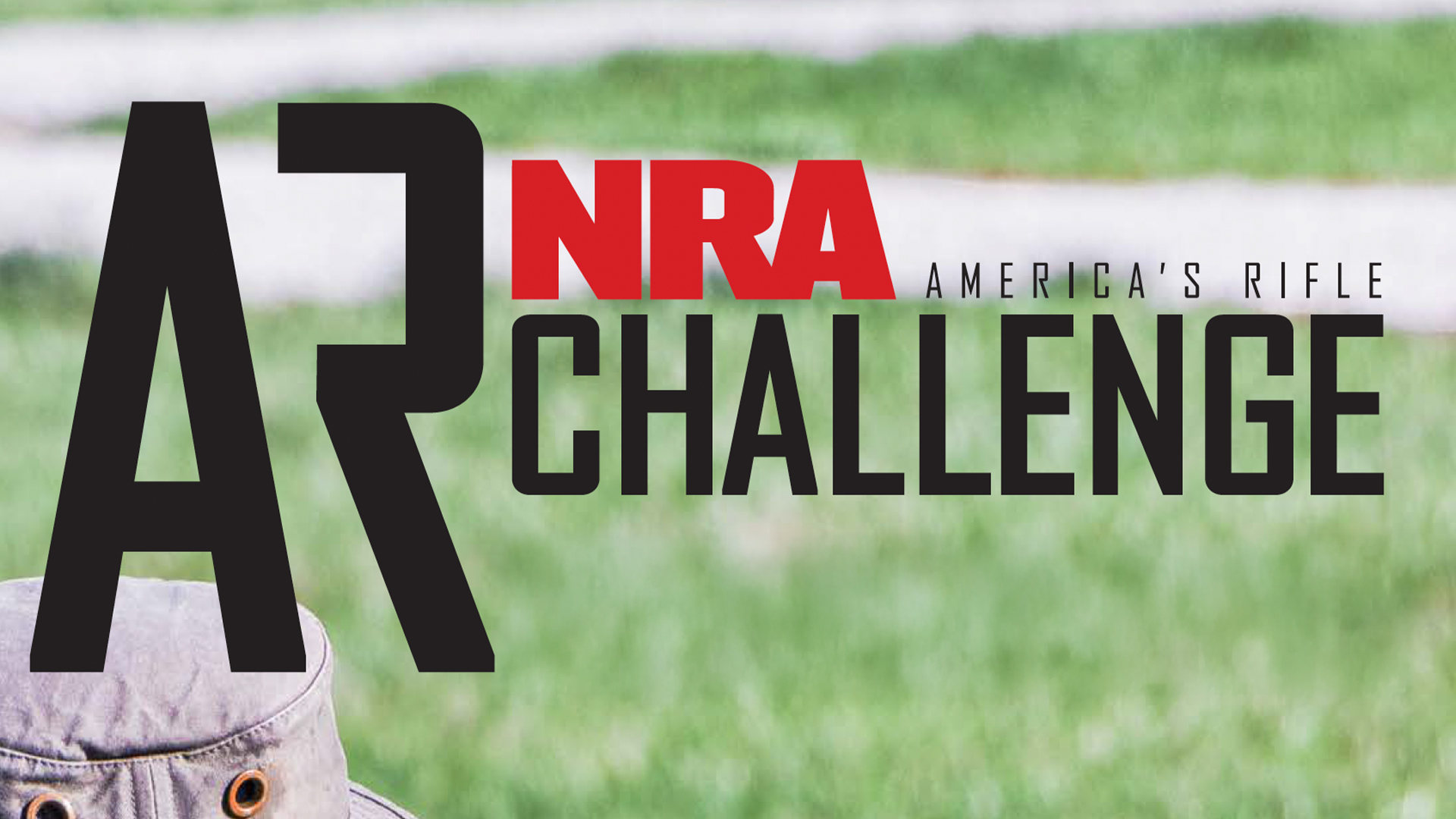
NRA America’s Rifle Challenge (ARC) is essentially a competition for everyday men and women—any responsible gun owner. NRA recognizes that it must offer exceptional, modern programs that bring responsible gun owners to clubs and ranges, while helping clubs run efficient and safe events that generate revenue. As such, NRA will soon be offering club, state, regional and national ARC matches.
“This is a way for shooters to get familiar with their AR rifles, especially new gun owners and even intermediate competitors,” NRA Competitive Shooting Division Director Cole McCulloch said. “If you’re capable and safe with your AR, we want you to participate in NRA America’s Rifle Challenge matches.”
Paramount to the NRA ARC program is safety, like all NRA programs. The NRA is spending considerable time and resources to ensure that NRA ARC courses of fire are designed with shooter safety in mind.
“We want people to have fun and to enjoy themselves competing,” McCulloch added.
Something to note—the NRA is still developing this program and the information presented here is subject to change after the final edition of the rulebook is released. The NRA ARC program rulebook and match guidance literature should be available no later than August 1, 2025.
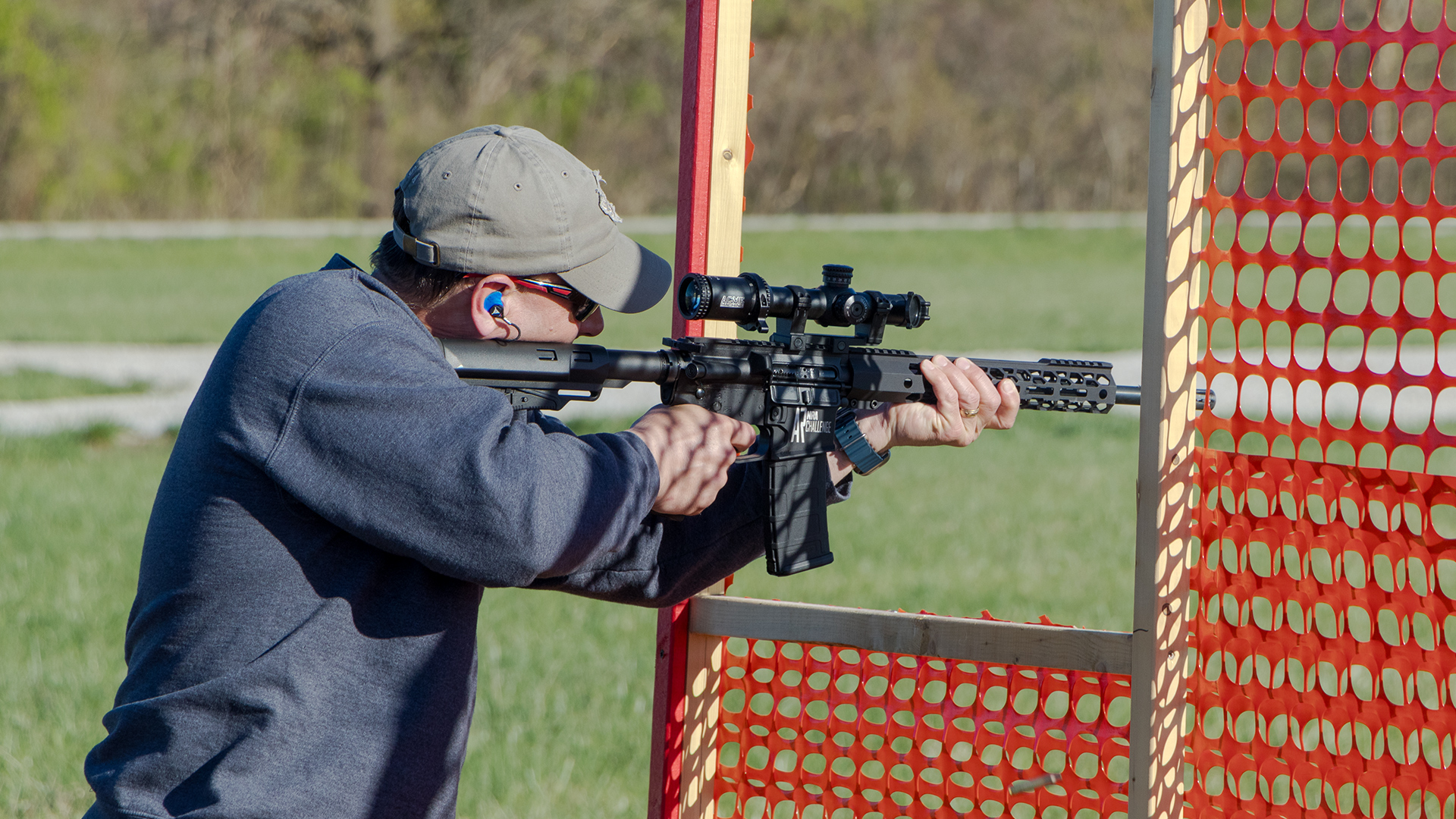
WHAT IS NRA ARC?
NRA America’s Rifle Challenge includes three different parts, Level 1, Level 2 and Two-Gun, with the latter adding a handgun into the mix. NRA Competitive Shooting is currently developing custom targets that will be available for all three components of NRA ARC competitions. Additionally, the NRA ARC program will be a rifle suppressor-friendly competition in states that it’s legal to own a suppressor.
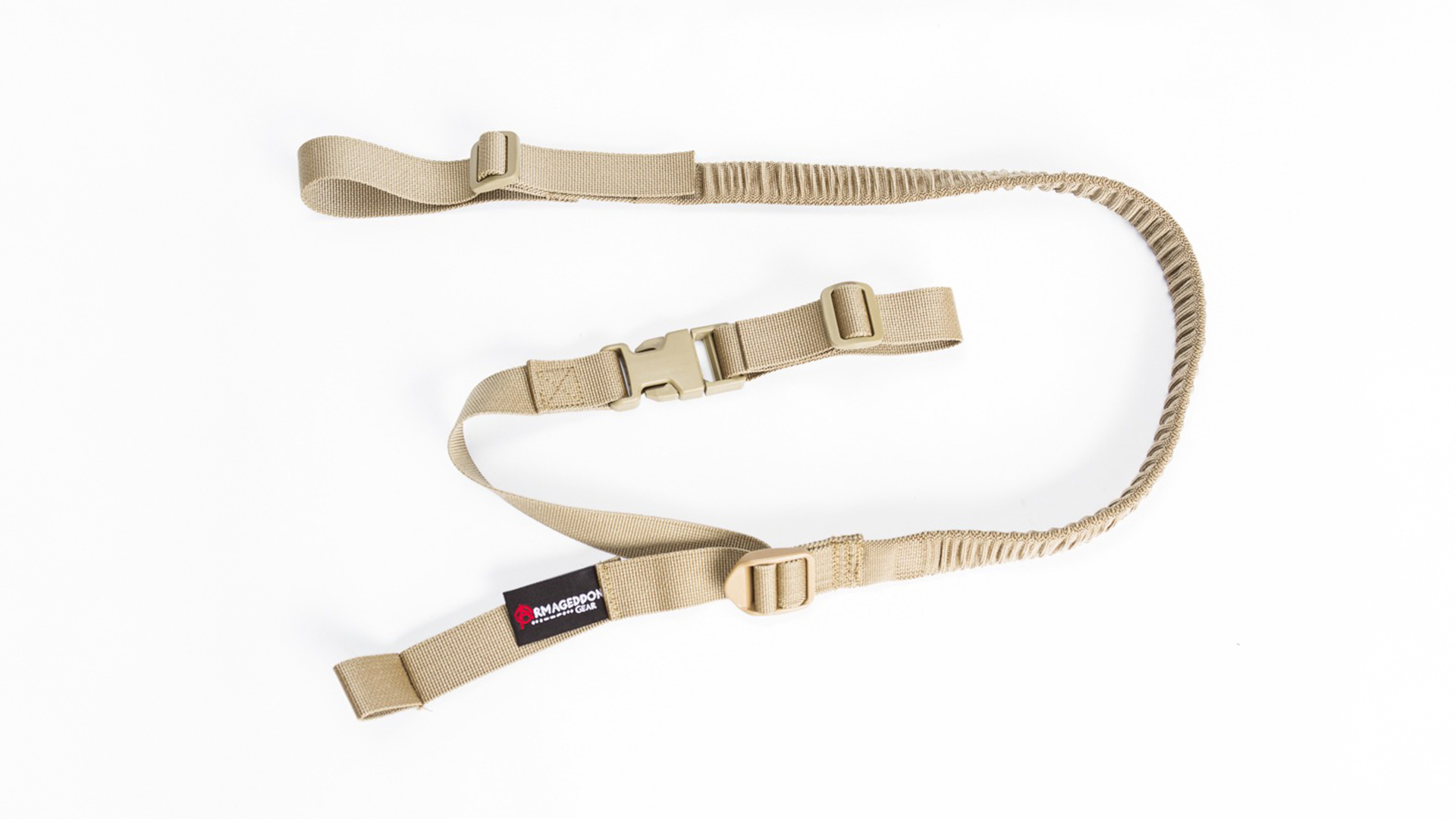
Rifles must be chambered in .223 Rem., 5.56 mm NATO, .308 Win. or .300 Blackout. Also, pistol-caliber carbines chambered in 9 mm Luger, .40 S&W or .45 ACP are permitted in all Level 1 matches and special Level 2 and Two-Gun events. All long guns must have a sling. (Some of the photos featured in this article are from the 2024 NRA World Shooting Championship, which didn’t require slings.)
NRA recently hired Chad Barber as the national ARC program manager. ARC matches will be run using the Practiscore system with scoring data to flow from Practiscore to NRA for processing. Also, NRA plans to release an ARC training program, a one-day course conducted by local ranges using NRA content. This course will help new AR owners prepare for ARC events, ensuring they have the proper gear, safety and marksmanship skills to compete.
If you were at the 2024 NRA World Shooting Championship at Camp Atterbury, you probably remember the America’s Rifle Challenge stage, which was a fan favorite. NRA thanks Acme Machine for its ongoing support of America’s Rifle Challenge.
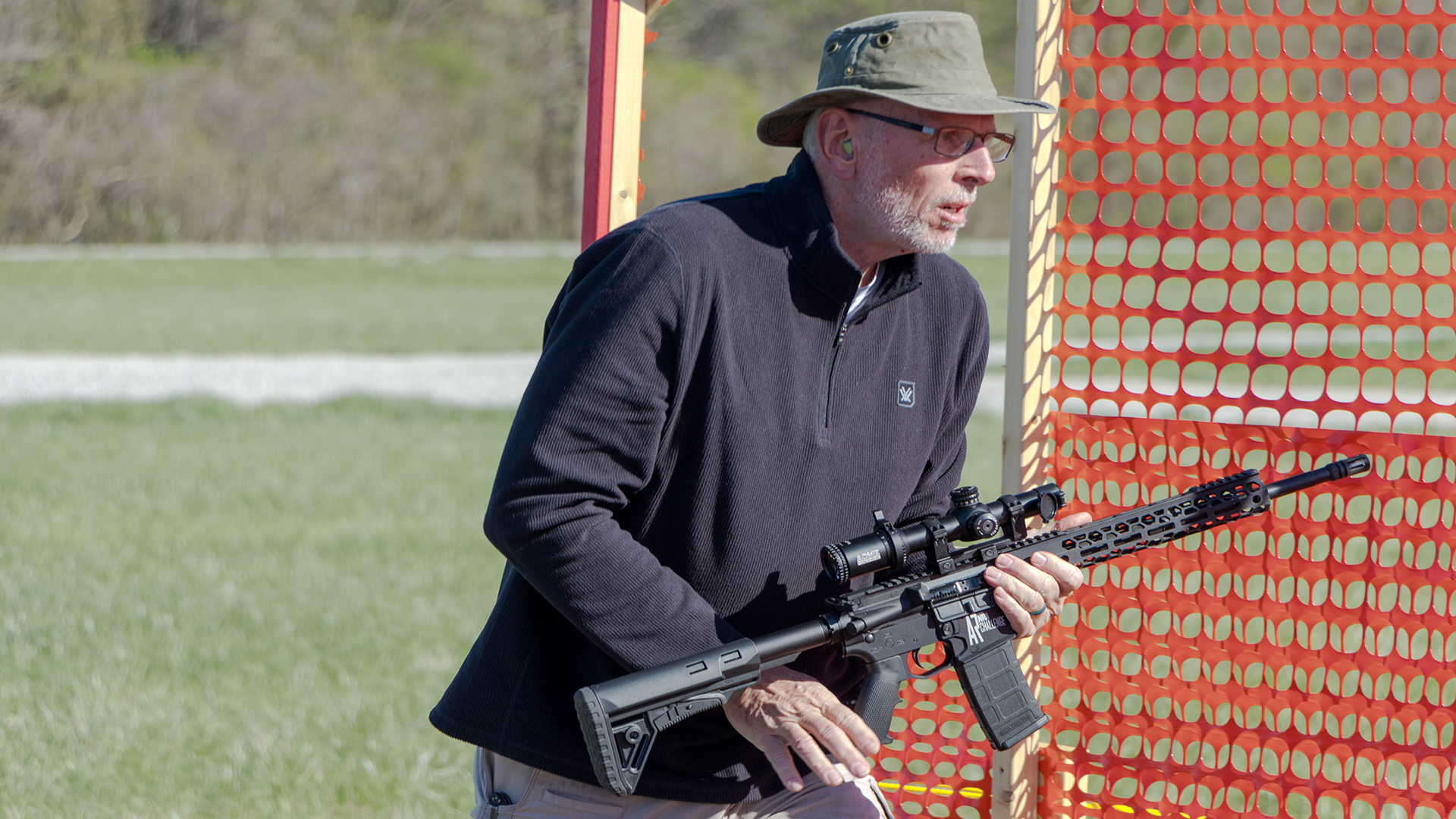
ARC LEVEL 1, LEVEL 2 & TWO-GUN
ARC Level 1 is a shoulder-to-shoulder match fired from 100 yards and closer on a square range. This level of competition is for safe AR shooters who want to challenge themselves by shooting in different positions under time limits. Target sizes, time limits and positional shooting requirements will test skill and accuracy for both newer and experienced shooters. The round count will be approximately 100 to 120 rounds. Additionally, ARC Level 1 can be held indoors or outdoors on 25- and 50-yard ranges with reduced-size NRA cardboard targets, suitable for many ranges around the country. As for the targets, initially the NRA AP-1 action-pistol target will be used, and that target will likely be modified after the ARC rules and match program are released later this year.
As for ARC Level 2, it’s more of a modern, action-style AR match, where targets can appear in any fashion at distances ranging from three to 500 yards. The ARC Level 2 course of fire covers the full spectrum of what is possible with an AR rifle. Competitors will face stages designed to test accuracy, positional shooting skills, precision at long range, speed, stage planning and using barricades, along with close-quarters exercises. ARC Level 2 match stages will be created by host ranges in a decentralized manner using guidance from the forthcoming NRA ARC rulebook, and will be fired in both shooting bays and across natural terrain. It involves dynamic movement and positional shooting from barricades and other props, and at a faster pace—thus, ARC Level 2 competitions will require a larger range than ARC Level 1. ARC Level 2 will also have higher round counts. Regarding the targets for ARC Level 2, that is still under wraps at the moment, but expect to see something similar to those commonly used in practical-shooting competitions, along with steel targets.
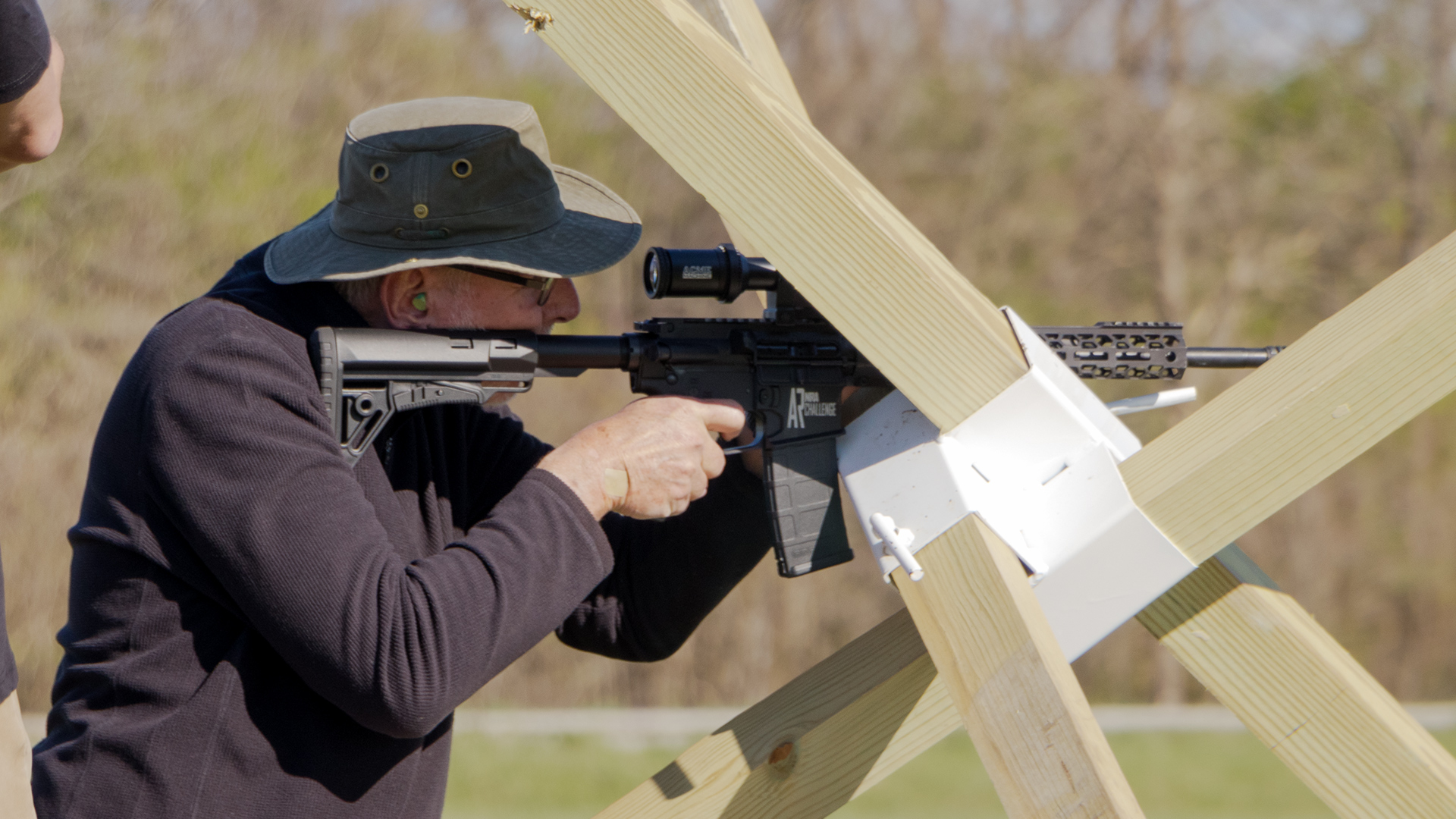
For the ARC Two-Gun component, it will be fired on the same types of ranges as ARC Level 2 matches, with the difference being you’re going to have a high-capacity handgun in addition to an AR rifle. The handgun magazine capacity will be dependent on local laws. Shooters will transition between handguns and AR rifles and vice versa. Courses of fire will be action style, similar to ARC Level 2. Pistols are holstered if the first part of a course involves shooting the AR rifle, and you will have to show clear to the Range Officer before you can transition to the handgun portion. For stages where the handgun is fired first, the handgun will not be reholstered, rather it will go in a dump bucket after shooting it. For the handgun-to-rifle transition, you will fire the handgun portion of the stage, dump the handgun in the safe bucket and then load your rifle. Shooters will not have a loaded rifle at the start of these stages. Instead, you’ll put the bolt forward on an empty chamber and then insert a loaded magazine when it’s time to shoot the rifle. So, when you’ve finished shooting your rifle and it’s time for you to put it in the dump bucket, all you have to do is rack the charging handle and you’re ready to shoot the rifle portion of the stage.
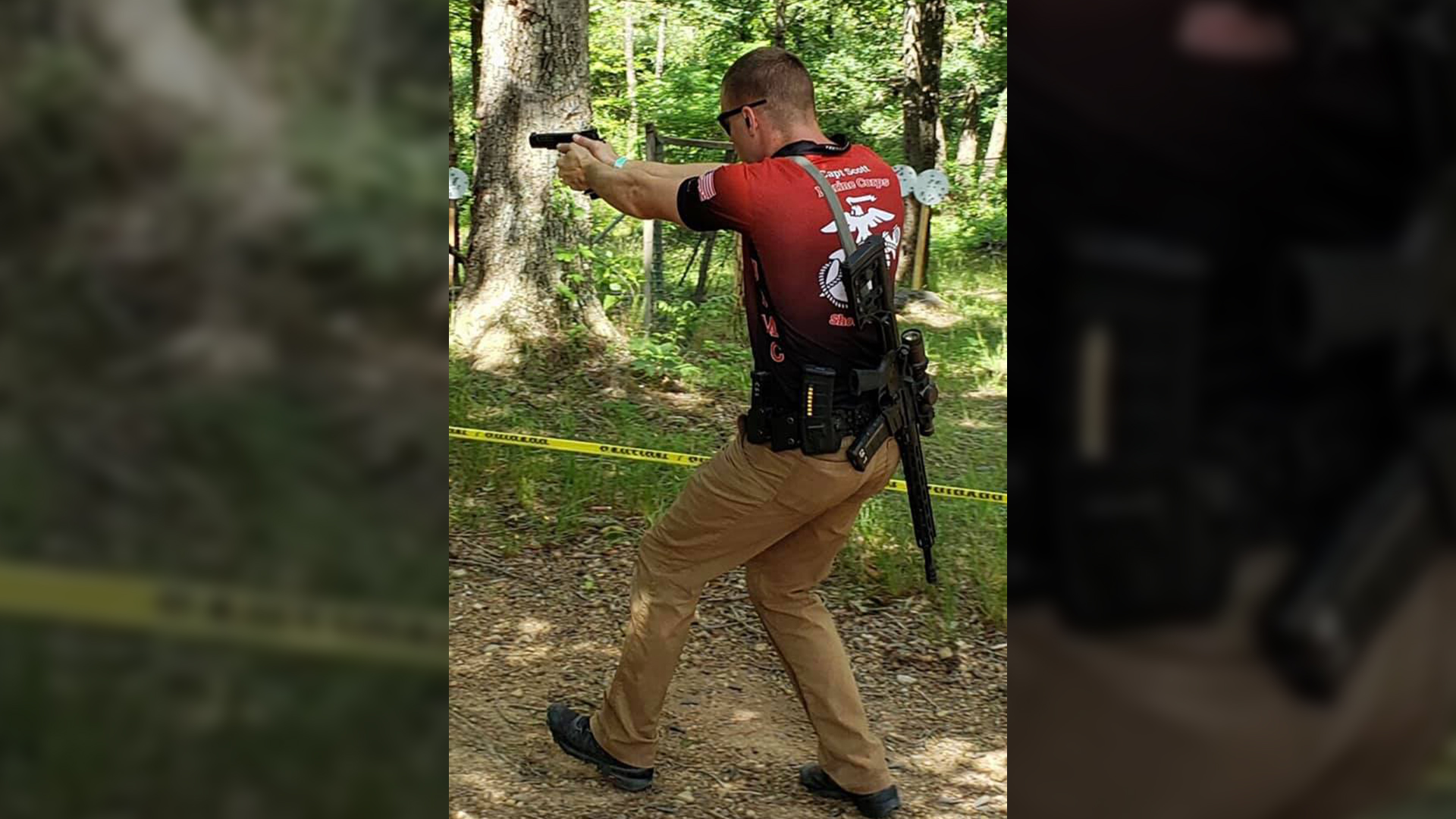
While NRA ARC Level 1 can serve as a stepping stone to ARC Level 2, it’s not essential for competitors to begin that way. As long as you can demonstrate that you can safely handle the advanced features of ARC Level 2, you will be able to compete.
EASY TO RUN
NRA has designed the ARC program to be simple for clubs and ranges to conduct matches. You won’t need much gear and equipment. For ARC Level 1, you’ll need the targets and stands, a 25- or 50-yard range, plus each lane will require at least one barricade (NRA will announce the description of what those barricades should look like soon). But other than that, all you need is a flat range, range officers, barricades, targets and target stands. That’s it.
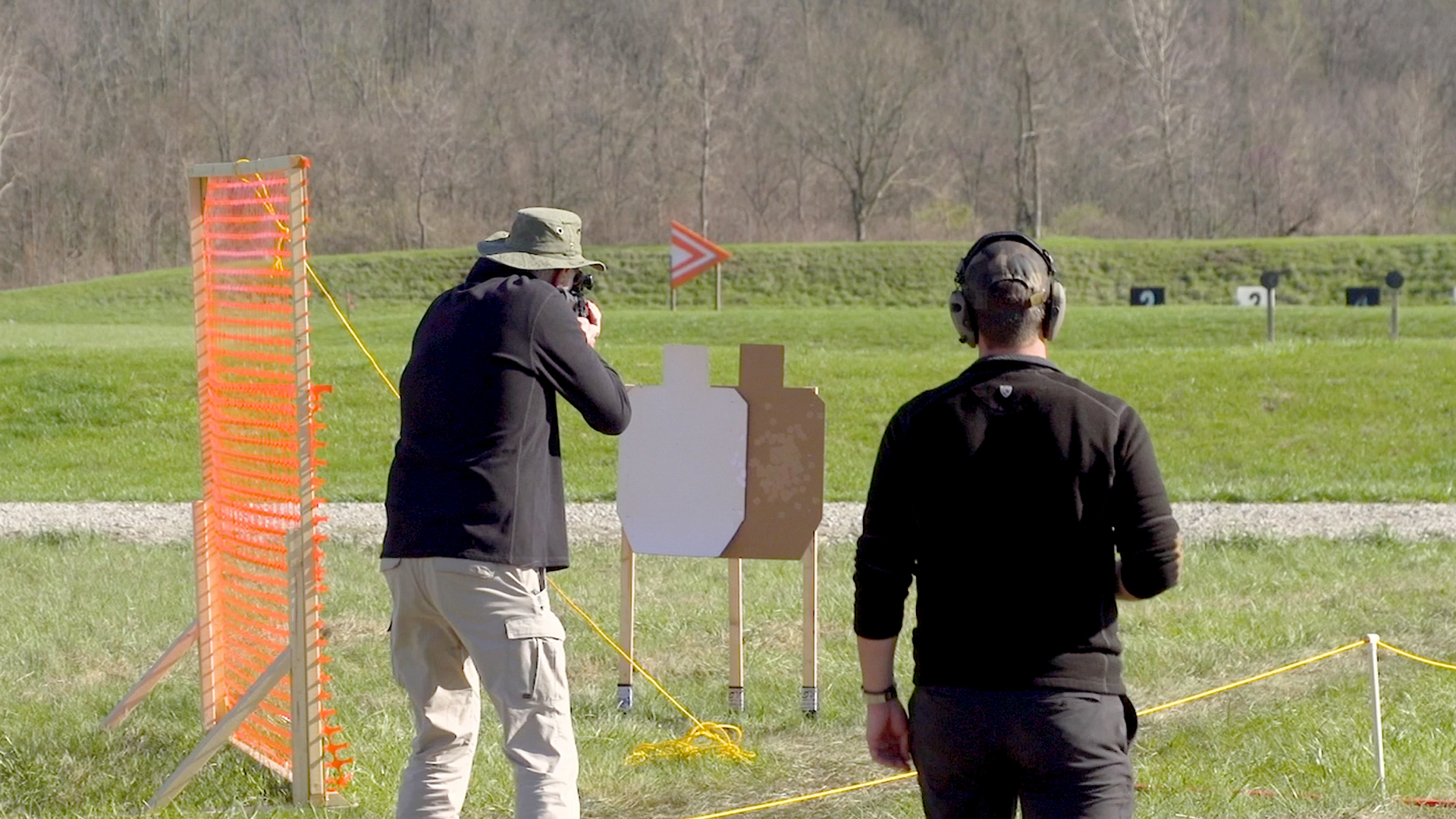
For ARC Level 2 and Two-Gun, you’re going to need equipment similar to Level 1, with the addition of action-style square ranges that feature natural terrain, and potentially some Bullseye bays or ranges.
For all three components of the NRA America’s Rifle Challenge program, there will also be classifier stages, similar to other action-shooting disciplines. This aspect is still under development, but will likely involve drills with competitors shooting shoulder-to-shoulder at one of the stages at 20 yards.
NRA will be providing awards for local ARC matches, similar to what is given out for other NRA competitions, like Precision Pistol, Smallbore and High Power. Eventually, a Distinguished component will be added to the ARC program as well.
FIRST NRA ARC MATCH
At Camp Atterbury, Indiana, on April 19, 2025, the National Rifle Association of America will launch the NRA America’s Rifle Challenge program with a special introductory competition. If you are a safe operator of your AR and want to experience a match and test unlike any other competition with your AR, act fast and register now at the NRA ARC website.
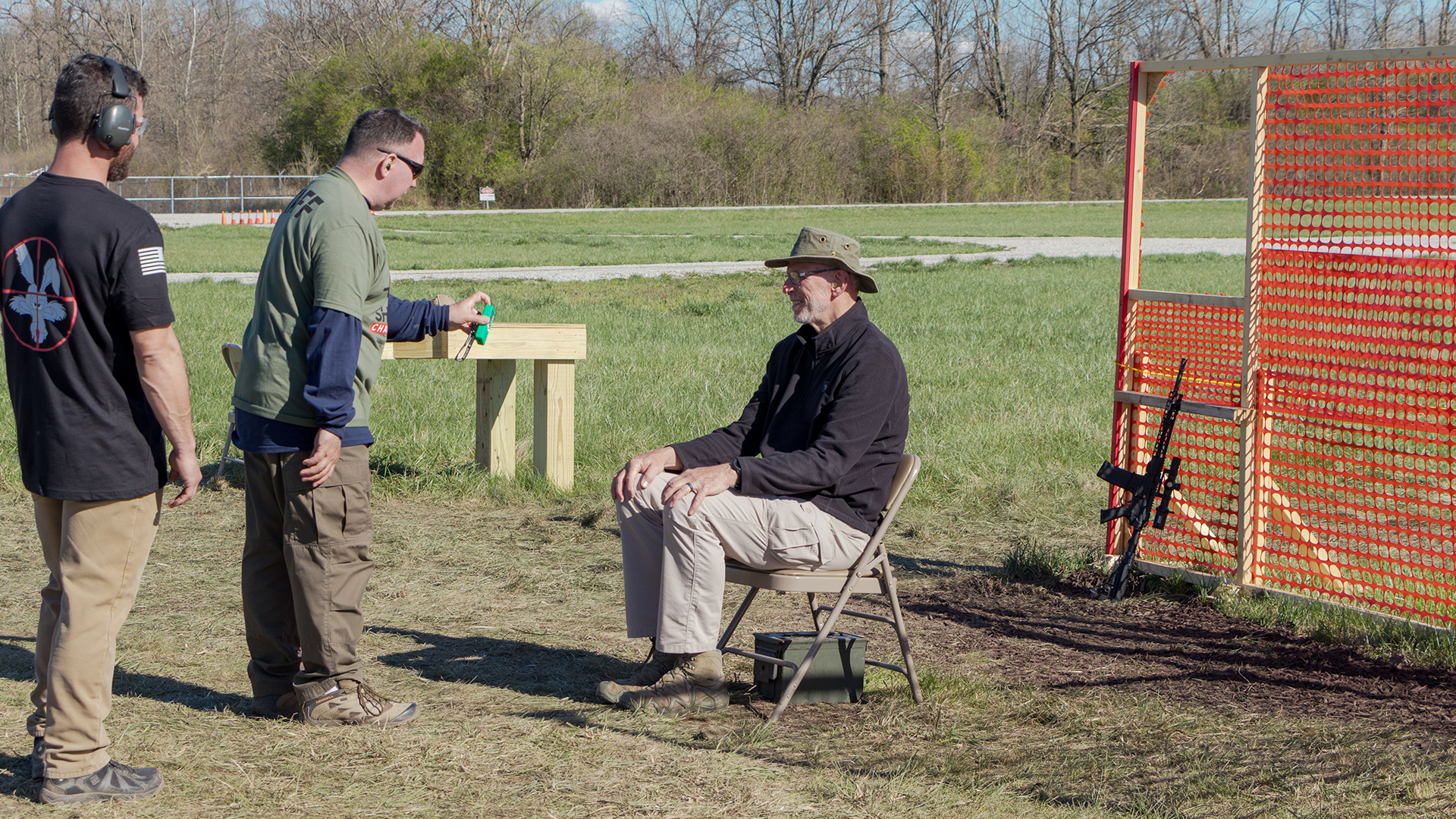
Both ARC Level 1 and Level 2 will be available for competitors to shoot at the Camp Atterbury match in April. In addition, there will be great NRA prizes and awards for competitors and winners.
After shooting has completed, NRA invites you to stick around for a BBQ lunch that will be free for all competitors and one immediate family member or friend watching you compete at the match. Not only that, “American Rifleman TV” will be conducting interviews with competitors and spectators, as well as documenting the match and awards ceremony.
As mentioned, the official NRA ARC program rules and other information will be made available later this year. In the meantime, you can learn more about the NRA America’s Rifle Challenge program and register for the match at Camp Atterbury in April at arc.nra.org.

